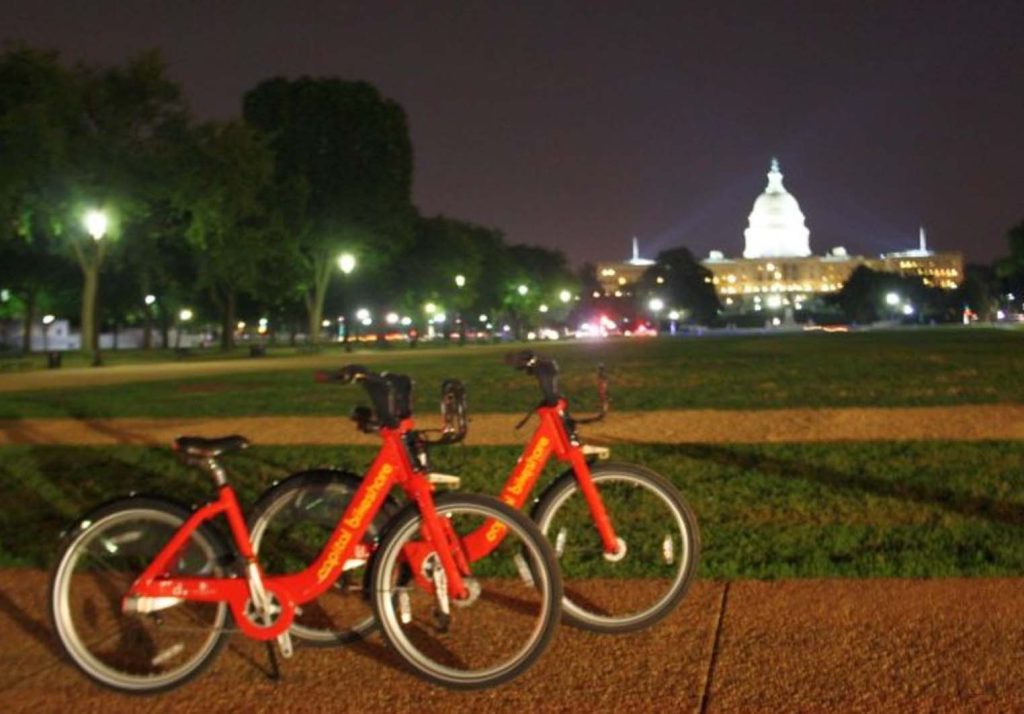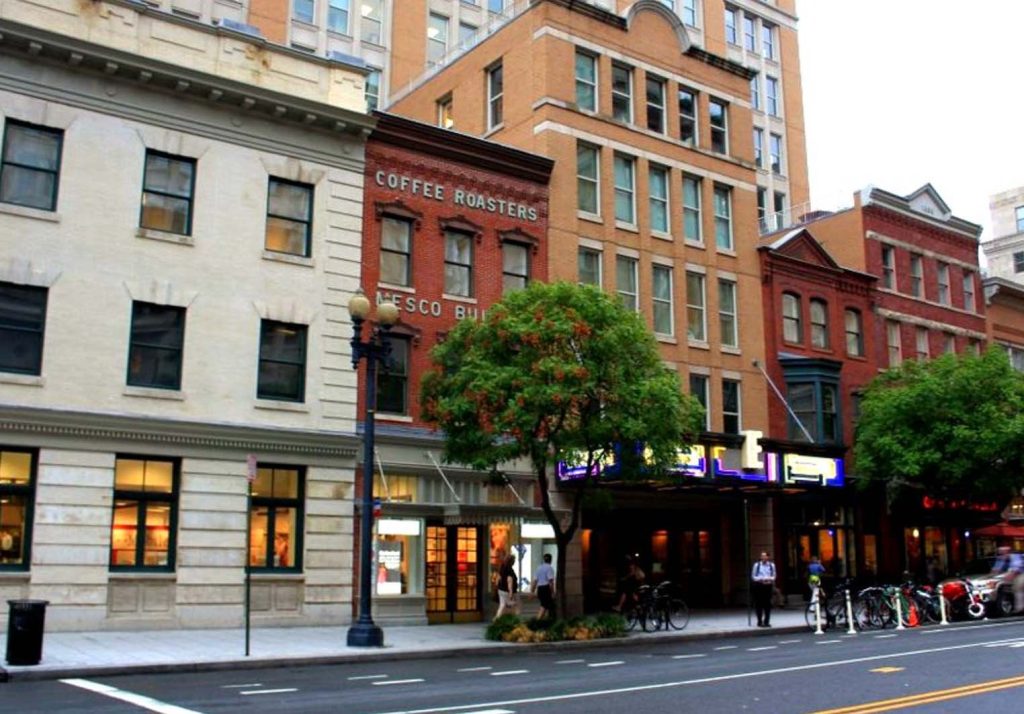Allow me to be straightforward right from the start. I have mixed feelings about Washington, D.C. Perhaps I’ve built it up in my mind more than necessary. This visit to the American capital occurred during a memorable cross-country road trip. It served as a significant milestone in my journey, allowing me to address some important matters. Additionally, it coincided with the official unveiling of the new Martin Luther King Jr. statue. I was also captivated by Dan Brown’s “The Lost Symbol” and wanted to witness the locations described in the book, in addition to exploring all the other remarkable sights in Washington, D.C.
On the flip side, my experience in Washington, D.C. exposed me to an interesting blend of official government edifices, the rugged expanses of northern woodlands, and some distinctive neighborhoods tucked away from the hustle and bustle. This city lacks a conventional downtown, and if not for the convenience of the CaBi Capital bike-sharing program, it might have felt somewhat devoid of character. Biking, I soon realized, was unquestionably the most effective way to explore the essence of Washington, D.C. With the CaBi program, you don’t even need to go through the hassle of renting a bike in the city – it’s more cost-effective and hassle-free, take my word for it.
Normally, I’d be keen on seeking out recommendations from locals, but this is Washington, D.C., after all. The city is home to a plethora of renowned landmarks that I knew were a must-visit on my itinerary: the White House, the Smithsonian museums, the Capitol Building, the Lincoln Memorial, the Martin Luther King Jr. Memorial, the National Mall, and the list goes on.
The White House, as both the official residence and workplace of the President of the United States, is the epitome of American democracy. Standing in its presence, I couldn’t help but feel the weight of history and the significance embodied by the building.
The Smithsonian museums are veritable treasure troves of knowledge and culture. I roamed through the National Air and Space Museum, where I found myself awestruck by historic aircraft and spacecraft that had ventured into the skies and beyond, evoking a sense of childlike wonder.
The Capitol Building, with its magnificent dome and neoclassical architecture, lies at the core of American democracy. Standing on the steps of the Capitol, I couldn’t help but be humbled by the countless momentous decisions that have been made within its walls.
The Lincoln Memorial, featuring an imposing statue of Abraham Lincoln, stands as a testament to the principles of freedom and equality. The view from the steps of the memorial, with the Reflecting Pool and the Washington Monument in the backdrop, is a sight that lingers in one’s memory.
The Martin Luther King Jr. Memorial, though a relatively recent addition to the city’s landscape, holds immense significance. The imposing statue of Dr. King and the inscriptions of his quotes serve as poignant reminders of his extraordinary contributions to the civil rights movement.
The National Mall, a sprawling, verdant expanse, links many of these iconic landmarks. It’s a place where individuals from all walks of life converge, reflect, and celebrate the ideals that define the nation.
While Washington, D.C. may lack a traditional city center, its attractions are scattered like precious gems throughout the city, each brimming with its own unique history and importance. And although my initial impression of the city was lukewarm, my exploration of its treasures on two wheels gave me a newfound appreciation for this extraordinary capital.

Without delay, I headed straight to the White House. As I stood there, gazing at the most recognizable residence in the news, I was filled with anticipation. I wished to catch a glimpse of Michelle in her garden or see the First Family’s daughters playing in the yard, rather than experiencing the eerie sensation of encountering the ghosts of past residents, as some might feel.
The White House, with its iconic neoclassical architecture, exuded a sense of history and authority. While standing on Pennsylvania Avenue, I reflected on the monumental decisions and historic events that had transpired within its walls over the years. The realization that I was looking at the home of the President of the United States, the epicenter of American democracy, left me in a state of wonder and fascination.
I envisioned Michelle Obama tending to her garden, which had become a symbol of her “Let’s Move!” initiative, aimed at promoting healthy eating and active lifestyles. The thought of the First Family strolling the grounds with their dogs or their daughters playing on the South Lawn added a touch of warmth to the imposing structure.
It was an otherworldly experience, and I couldn’t help but ponder the history, mysteries, and untold stories hidden behind those grand columns and meticulously landscaped gardens. The White House represented not only democracy and leadership but also a place where personal lives intertwined with the responsibilities of the highest office in the nation. This visit offered me a brief glimpse into that world, leaving a lasting impression of the epicenter of American politics and history.

After my visit to the White House, I decided to take a complete tour around the iconic residence and explore several museums, but my expectations were soon dashed. It wasn’t until I made a quick check on Google Maps that I realized the extent of my trek. In order to catch a glimpse of this particular part of Washington, D.C., I had already covered a distance of over three miles on foot. It became clear to me that Washington, D.C. didn’t offer the same kind of convenient block-to-block exploration as cities like London or New York.
My journey around the White House was filled with anticipation, as I hoped to get a closer look at the residence and perhaps even witness some historical or contemporary significance. The experience of being near such a pivotal center of American politics and history was undeniable.
As I proceeded to explore the city’s numerous museums, I encountered a series of disappointments. Some museums were closed for renovations, while others had limited access to their collections due to ongoing exhibitions. For a history and culture enthusiast like myself, it was a challenging experience.
It wasn’t until I decided to consult Google Maps for navigation that I realized the considerable distance I had walked. More than three miles of walking just to see a small portion of what Washington, D.C. had to offer. It was clear that this city didn’t lend itself to leisurely strolls from one block to the next, as one might do in cities like London or New York. Washington, D.C. had its own unique layout and required a different approach to exploration. My experience in the capital city had taught me the importance of planning my visits more strategically and making efficient use of available resources to navigate this distinct and historically rich urban landscape.
I contemplated taking the metro because Washington, D.C. boasts one of the best public transportation systems in the United States. However, spending time underground in tunnels would mean less time for exploring. Fortunately, I stumbled upon a familiar sight – a bike-sharing system resembling Montreal’s Bixi, and I knew I was saved.
This system is especially beneficial for city residents who can purchase an annual membership for just under $100. However, for leisure tourists like me, the CaBi program offers an excellent choice as well – a 24-hour rental for only $8. You swipe your credit card at the station kiosk, get the code to unlock a sleek cruiser bike, and you’re good to go. The three-day option was relatively new, so during my stay in the city, I opted for the 24-hour rental, which cost me just $5 at the time. With this, I could take an unlimited number of rides, each lasting 30 minutes or less. After 30 minutes, I’d return the bike to the nearest kiosk, either continue sightseeing or wait for a couple of minutes, swipe my card again, and hop on another bike for the next leg of my adventure.
With a total of 1,100 bicycles throughout the city, you could rest assured that finding a bike was seldom a concern. In cases where a station was full, you simply swiped your card and located the nearest station with available parking slots, granting you a 15-minute buffer to get there. Should you choose, you could extend your bike rental for an extra half-hour at an additional charge of $1.50 per half-hour. The system was purpose-built to make it easy for you to pick up a bike, reach your destination, and return it without any obligations, bypassing the need to lock the bike. All of this came at a mere fifth of the price of standard daily city bike rentals, rendering it a well-designed and cost-effective mode of transportation around the city.

At sunset, I hopped on a bike outside the Department of Justice and embarked on a cycling tour that took me through the shopping district, the Capitol Building, and the monuments. Admiring the city’s nighttime skyline was an absolute thrill, and then I left my bike behind, picked up a fresh one, and rode north along Massachusetts Avenue towards the Dupont Circle area. Along the way, I passed bustling bars filled with professionals and those unwinding after a day’s work – the tradition of happy hour continued. In Washington, D.C., using these shared bikes was much more convenient than traditional bike rentals because I didn’t have to worry about locking the bike every time I made a stop.
I left the bike a few buildings away from my residence at the Governor’s Hotel, freshened up, and prepared for dinner. Then, I hopped on a new bike and pedaled my way to a hearty evening meal. Riding through the city after dark, as the temperature dropped and traffic eased, was a truly relaxing experience. I could leisurely cruise, take photographs, meander freely, and even get a bit lost, all without concerns about traffic conditions.
Cycling through Washington, D.C. in the evening allowed me to soak in the city’s nocturnal charm, discover hidden gems, and savor the sense of liberation that comes with navigating a vibrant city on two wheels.

The following morning, I explored the major attractions and took up the suggestion to visit the Capital Grill located in the Trinidad neighborhood of Washington, D.C. With over 10 hours left on my bike rental, I pedaled my way to a brightly lit station just two blocks from the restaurant. Unfortunately, this local experience turned out to be a complete mess (to put it mildly, it involved greasy, processed food and at least one person who had been recently released from prison, complete with an ankle monitor). Nevertheless, I truly appreciated the quiet and colorful communities I encountered along the way – a side of the city I might not have otherwise experienced.

The remaining afternoon was spent cycling through the side streets and main roads, complete with well-defined and convenient bike lanes. While I had initially arrived in Washington, D.C. with a sense of skepticism, I used the time to gain a deeper understanding of the city and appreciate these glimpses of everyday life in its quieter corners. It turned out that Washington, D.C. was an incredibly cool city, and it was best conquered through bike rentals. I recommend cycling as much as possible in a new city. I’ve cycled in Costa Rica, Ottawa, Montreal, Washington, D.C., New Orleans, and Laos, and each experience offered unique insights into the heart of the places I visited.
